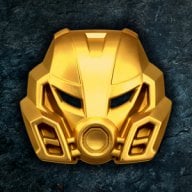First a definition for this question, because there are many kinds of sci-fi out there and they sometimes liberally use cool sounding words without explaining them:
A disruptor is a kind of weapon that weakens, or “disrupts”, either material bonds (breaking a material into molecules), molecular bonds (breaking a molecule into atoms), or atomic bonds (breaking an atomic nucleus into protons, netrons, and free electrons. Almost like instantly turning into plasma).
Temperature can do these things, but the idea behind a disruptor, specifically, is that it happens through some kind of catalyst, rather than brute-forcing with insane amounts of heat.
Would such a weapon physically be possible (even if we don’t know how to make them just yet)?
How would a target realistically behave when hit by a disruptor?


Disclaimer: I have nothing more than a secondary education level of physics and a keen interest in physics in general.
It’s common scientific belief that all physical forces are backed up by a field, for example, magnetism by the electromagnetic field, gravity by a gravity field. It would follow that the strong and weak nuclear forces also have corresponding fields.
For a disruptor to work as seen in fiction, you’d probably be looking to disrupt the weak nuclear force, and would need a mechanism to locally change the properties of the corresponding weak nuclear field.
I don’t know if there is such a mechanism available to us currently. Hopefully someone else has a definitive answer.
I would like you to be Secretary of Science in my new cabinet
Is it a nice cabinet? I like a good walnut cabinet with at least 2 shelves.